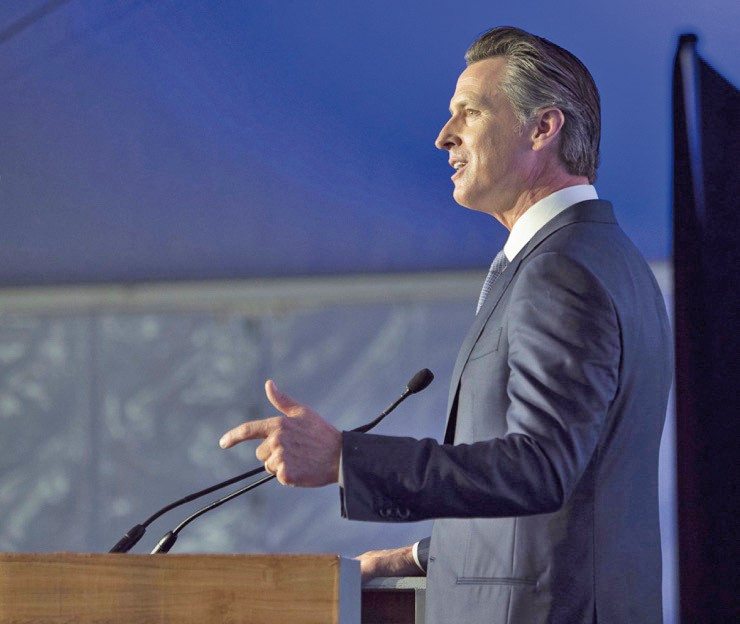
California to work in conjunction with other states to reopen the West Coast
CALIFORNIA Gov. Gavin Newsom this week unveiled a framework for reopening the state’s economy and society.
Though he provided no exact timeline (the statewide stay at home extends through May 3), Newsom said that he would base his decision to reopen on local governments and did not comment on President Donald Trump’s claim that the president has full authority to reopen the country.
“There is no light switch here, it’s more like a dimmer,” the governor said on Tuesday, April 14. “I know you want the timeline, but we can’t get ahead of ourselves and dream of regretting. Let’s not make the mistake of pulling the plug too early, as much as we want to.”
The state’s roadmap to reopening involves six steps: provide adequate testing and maintain physical distancing orders; prevent infection to high-risk individuals; adequately support and stock hospitals and health care systems; provide therapeutics to meet demand; ensure businesses, schools, and child care institutions are able to function with physical distancing measures; and ensure there is enough data to support the decision to reopen the state.
In his remarks, Newsom acknowledged the anxiety Californians feel about the continued shelter in place measures that have upended their lives. But he pointed out the potential damage of reopening the state prematurely despite the efforts that have already flattened the COVID-19 curve.
“I don’t want to make a political decision that puts people’s lives at risk and puts the economy at even more risk by extending the period of time before we can ultimately transition and get people moving again,” Newsom said.
Even after the state eventually re-opens, Californians will have to adjust to a new normal.
He also warned Californians that they should prepare for a future where, after businesses reopen and society slowly returns to normal, they will continue to wear facemasks. Restaurant employees would also continue to wear face masks and gloves and serve half as many customers to maintain safe distances.
Schools would also have to develop new protocols regarding the sanitization of schools and playgrounds and guidelines for physical education, recess and other activities where students may come in contact with each other.
“We are not out of the woods yet [and] we are not spiking the ball,” Newsom said. “But we also extend a recognition in that light that this can’t be a permanent state, and I want you to know it’s not; it will not be a permanent state.”
Regarding the reconvening of concerts, festivals, shopping malls and other instances of large gatherings of hundreds of people or more, Newsom said that there’s no timeline, saying that it is currently “not in the cards based upon our current guidelines and current expectations.”
On March 19, Newsom made California the first state to announce a statewide stay-at-home order, and that has allowed California to successfully minimize the pandemic’s effect on the Golden State.
Although about 22,348 people have been infected and 687 people have died (according to statistics from California Health and Human Services), the state’s early response helped prevent a more drastic situation like that of New York state which has the most cases of COVID-19 than any country outside the United States.
Right before he released his guidelines, Newsom joined fellow Democrats Washington Gov. Jay Inslee and Oregon Gov. Kate Brown on Monday, April 13 to announce a regional partnership to collaborate on the reopening of the West Coast. In a similar move, seven states in the northeast, including New York and New Jersey, have created their own regional plan to reopen their states.
This pact was unveiled after Trump’s declaration that he has the de facto power to reopen the country’s economy, saying on Monday, April 13 that his “authority is total” to reopen states’ economies. But on Tuesday, April 14 he walked back his statements, saying that he would authorize “each individual governor of each individual state to implement a reopening and a very powerful reopening plan of their state.”







